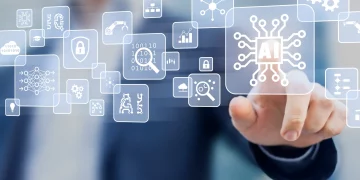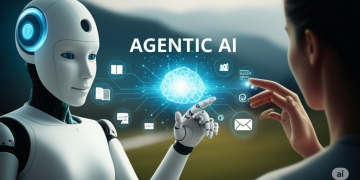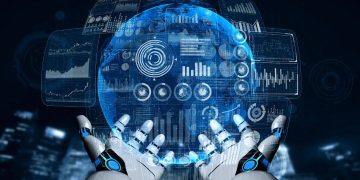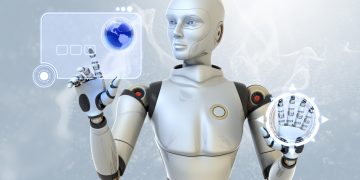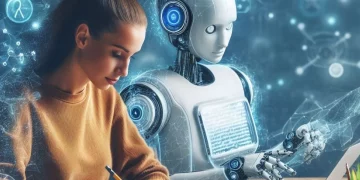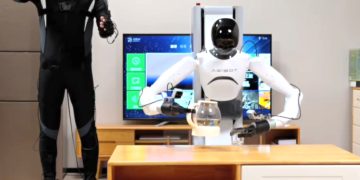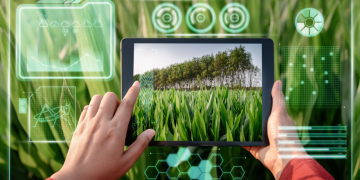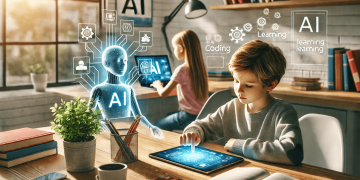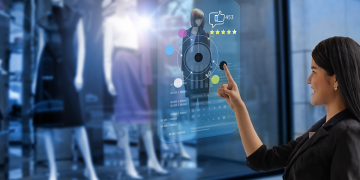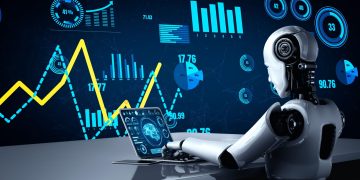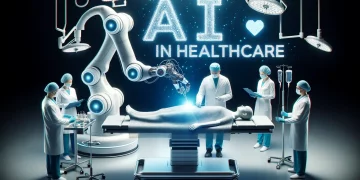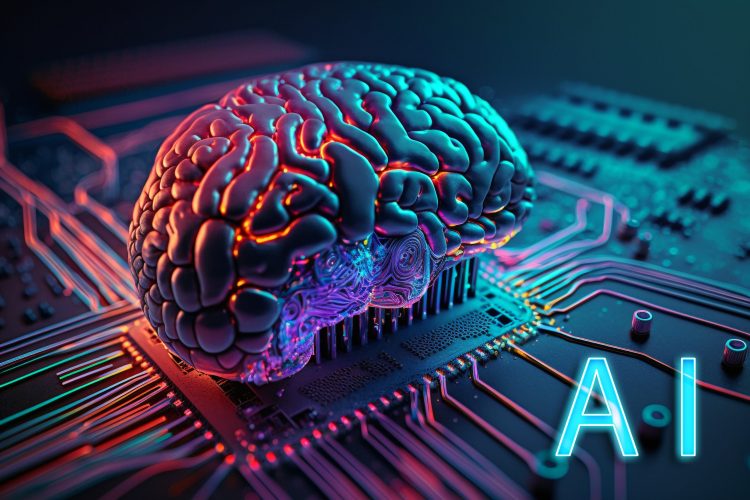Artificial Intelligence (AI) has been steadily progressing for decades, but in recent years, breakthroughs have been arriving at an accelerating pace. These advancements are reshaping industries, improving processes, and even creating entirely new opportunities. In this article, we will delve into the most recent and impactful technological innovations in the field of AI, exploring their potential to change the industry as we know it.
1. Advancements in Natural Language Processing (NLP)
Natural Language Processing (NLP) has seen tremendous improvements, especially with the advent of transformer-based models like GPT-3 and BERT. These models have significantly improved AI’s ability to understand, interpret, and generate human language in a way that feels natural and intuitive. One of the most profound developments in NLP is the creation of models that can generate human-like text, translate between languages, and even understand context and sentiment.
This leap forward opens up a myriad of applications, such as in virtual assistants, real-time translation, content generation, and personalized communication. With models like GPT-4, the ability of machines to interact with humans has become more sophisticated than ever before, giving rise to innovations in customer service, content creation, and even healthcare.
2. Breakthroughs in Computer Vision
Computer Vision is another area of AI that has made impressive strides. The use of deep learning algorithms for image recognition has improved accuracy levels dramatically. New AI systems are now capable of not only identifying objects within images but also understanding complex scenes and performing actions based on visual input.
This has enabled significant developments in various fields, such as autonomous vehicles, where AI can process and respond to visual information in real time. In medicine, AI-powered imaging tools can detect diseases such as cancer from X-rays and MRIs with remarkable precision. With the combination of advanced neural networks and more powerful computing resources, computer vision has moved far beyond basic tasks like object detection into more nuanced and complex applications.
3. Reinforcement Learning and Autonomous Systems
Reinforcement learning (RL) has garnered significant attention due to its role in developing autonomous systems. In RL, AI learns to make decisions by receiving feedback from the environment in the form of rewards or penalties. This type of learning is incredibly powerful for training models in complex environments, such as robotics, gaming, and autonomous vehicles.
Recently, RL has reached a level of sophistication where systems can perform complex tasks in real-world environments. For example, AI models trained via reinforcement learning have been able to beat human champions in games like Go and Dota 2, and they are now being applied to train autonomous vehicles and robots. These systems are capable of optimizing their decision-making processes and learning from trial and error, which is vital in unpredictable environments.
4. Generative Adversarial Networks (GANs) and Content Creation
Generative Adversarial Networks (GANs) have revolutionized the way AI can generate content. GANs consist of two neural networks, a generator and a discriminator, which work against each other to create realistic data—whether it’s images, music, or even text. These systems have been used to generate photorealistic images, art, and even video content, which has raised exciting possibilities for industries like entertainment, marketing, and fashion.
More recently, GANs have been used to create deepfakes, a technology that can realistically superimpose one person’s face onto another’s in video footage. While deepfakes have raised concerns about misinformation, they also present significant opportunities in creative industries, such as film production, advertising, and game design. As GAN technology continues to evolve, it will open up new frontiers for creative expression and content generation.
5. AI in Healthcare: From Diagnostics to Drug Discovery
The healthcare sector has long been a focus of AI research, and recent breakthroughs are showing that AI is poised to revolutionize the way medical professionals diagnose, treat, and prevent diseases. One of the most significant developments has been in AI-driven diagnostics, where machine learning models are now able to analyze medical images with greater accuracy than human doctors. For example, AI can detect early-stage cancers, predict heart disease, and even spot conditions like diabetic retinopathy and glaucoma.
In drug discovery, AI is being used to analyze biological data and identify potential compounds for new drugs. Machine learning algorithms can sift through vast amounts of data to find patterns that humans might miss, accelerating the drug discovery process and potentially reducing the time it takes to bring new treatments to market. These breakthroughs are improving patient outcomes and transforming the healthcare industry at a rapid pace.

6. AI-Powered Robotics: From Industry to Daily Life
Robotics has seen an incredible surge in capabilities, thanks in part to the advances in AI. Today’s robots are no longer limited to performing repetitive tasks on factory floors; they are becoming increasingly autonomous, capable of adapting to changing environments and performing a wider range of functions.
In the industrial sector, AI-powered robots are improving efficiency in manufacturing, logistics, and supply chain management. These robots can learn new tasks quickly, handle complex operations, and collaborate with human workers in a safe and efficient manner. Beyond industry, AI-driven robots are also making their way into homes and public spaces. From smart home assistants to robot vacuum cleaners and even personal assistants, AI-powered robotics is becoming a part of daily life.
7. AI in Finance: Automating Investment and Risk Management
AI is changing the way financial institutions approach investing, risk management, and fraud detection. With AI-powered systems, banks and investment firms can analyze vast amounts of data in real-time to make faster and more informed decisions. These systems can assess market trends, evaluate risks, and even automate trading strategies, all while minimizing human error.
In risk management, AI algorithms can identify potential fraud or market volatility before it happens, helping companies take proactive measures to protect their assets. AI is also enhancing customer experiences in banking, with chatbots and virtual assistants providing more personalized services.
8. AI-Driven Cybersecurity
As the world becomes more digitally connected, cybersecurity has become a top priority. AI is playing an increasingly important role in identifying and combating cyber threats. Machine learning models can detect anomalies in network traffic, identify potential vulnerabilities, and predict cyberattacks before they happen. These systems continuously evolve to stay ahead of hackers, improving data security for businesses and individuals alike.
Furthermore, AI is being used to automate the process of patching software vulnerabilities and detecting malicious activities, enabling cybersecurity teams to respond faster and more effectively.
9. Ethical and Responsible AI Development
As AI technology continues to advance, there is an increasing focus on the ethical implications of its deployment. Concerns about data privacy, algorithmic bias, and the transparency of AI systems have prompted calls for more responsible AI development. Researchers and policymakers are working together to create frameworks and regulations that ensure AI technologies are developed and used in ways that are fair, transparent, and equitable.
This includes efforts to reduce bias in AI models, ensure accountability in decision-making, and protect individuals’ privacy. As AI becomes more integrated into various sectors, ensuring its ethical use is critical to building trust and ensuring positive societal impacts.
Conclusion
The latest breakthroughs in AI are driving rapid transformations across multiple industries. From NLP and computer vision to autonomous systems and healthcare innovations, AI is not only enhancing existing processes but is also opening up entirely new possibilities for the future. As we continue to push the boundaries of what’s possible with AI, it’s clear that we are entering a new era of technological advancements that will shape our world in ways we are just beginning to understand.





